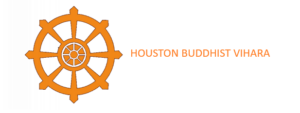Newsletter – August 2020
“Some are extremely gentle, extremely meek, and extremely peaceful so long as a disagreeable speech does not touch upon them. However, only after a disagreeable speech reaches them, one can understand whether they are actually kind, gentle, and peaceful or not.”
This utterance indicates that one’s personality development can be tested by one’s reaction to opposing views and arguments. Any individual can be gentle when his or her views are approved by others, but the well-developed person remains pleasant even when his or her views are opposed by others.
Elaborating on what he meant by gentleness, the Buddha advised further:
“You must train yourself in the proper way [before responding to what people say]. They may talk to you at the right time or wrong time; they may tell you the truth or a lie; the way they talk may be gentle or harsh; their speech may be beneficial or useless to you; [finally,] they may speak with a wholesome intention or with an unwholesome motive.
However it is, you must train like this: “Our minds will remain unaffected, and we shall utter no unpleasant words; we shall remain compassionate for their welfare with a mind of loving-kindness, without inner dislike’”
What is most fascinating in these instructions is the Buddha’s view that the development of communication skills is not just an external act; rather, compassion toward the listener should predominate throughout the process of communication. Even though one speaks at the wrong time, tells lies, uses harsh words, offers useless and harmful instructions, and reacts angrily, still the skillful listener should keep the compassion towards the speaker intact.
Majjhima Nikaya: 21; Middle Length Discourses of the Buddha, 217-223
Maha Sangha will conduct the next live-stream morning service on Sunday, August 2nd, at 9:00 am. We are requesting parents to mark the service on calendar and participate with their children.
Vas Aradhna on Monday, August 3rd
Vassa Aradhana (invitation to the rain retreat) will take place on Nikini full-moon day (August 3rd) at 8:00 pm.
Considering the wellbeing of the monks and the community, only a few Vihara members will physically participate in the event, and all of you can participate in it through Zoom Live. We will send the link Sunday.
Vassa observance Begins on August 4th
Vassa observance by Ven. Rahula and Sirirathana Theros will take place the following day, August 4th, and will end on Vap full moon day, Oct. 30th. The day of the Kathina ceremony will be announced later.
Vassana Programs
A special Dhamma speech will be given every Saturday, and a Bodhi Puja will be held every Sunday. Notably, several distinguishing members of Maha Sangaha in Sri Lanka and in the USA will give several of the Dhamma talks through Zoom Live.
Bhante Sathi Will Give the First Dhamma Deshana
The first of the Dhamma Deshanas will be given on Saturday, August 8th, by Ven. Peradeniye Sathindriya Thero (Bhante Sathi), abbot of the Triple Gem of the North, Minnesota. Venerable Thero is well known to the Houston Vihara community.
Anuruddha and Irani Kulatunga family will sponsor this Dhamma program. The Vihara appreciates their sponsorship.
Sponsorship of Programs
Our faithful devotees may take sponsorship of each Dhamma Deshana and Bodhi Puja and receive enormous blessings, which may be shared with their departed loved ones, wishing them the ultimate bliss of Nibbana.
In the past years, sponsoring a program means a lot of activities, including preparing dinner for the participants. However, the current situation has simplified sponsorship this year.
In sponsoring a Saturday Dhamma Deshana, it is the responsibility of the sponsor family to:
1. Invite their friends and family members to participate in the live Zoom program.
2. Offer a Parikkara (donation) to the the Bhikkhu who gives the speech
In sponsoring a Sunday Bodhi Puja:
1. You may physically participate in the Puja with flowers and the like.
2. You offer a donation to the Bhikkhu who conducts the Puja
